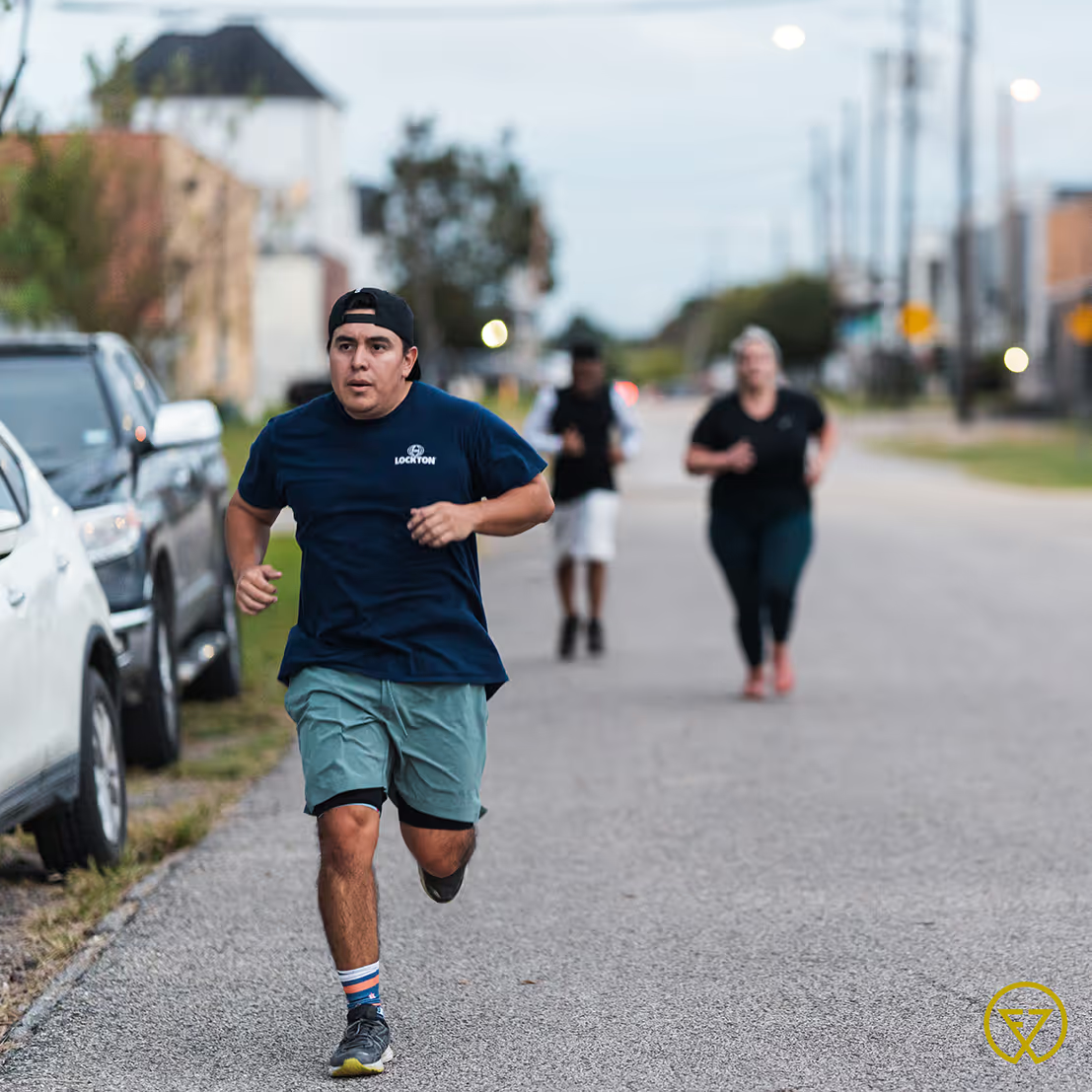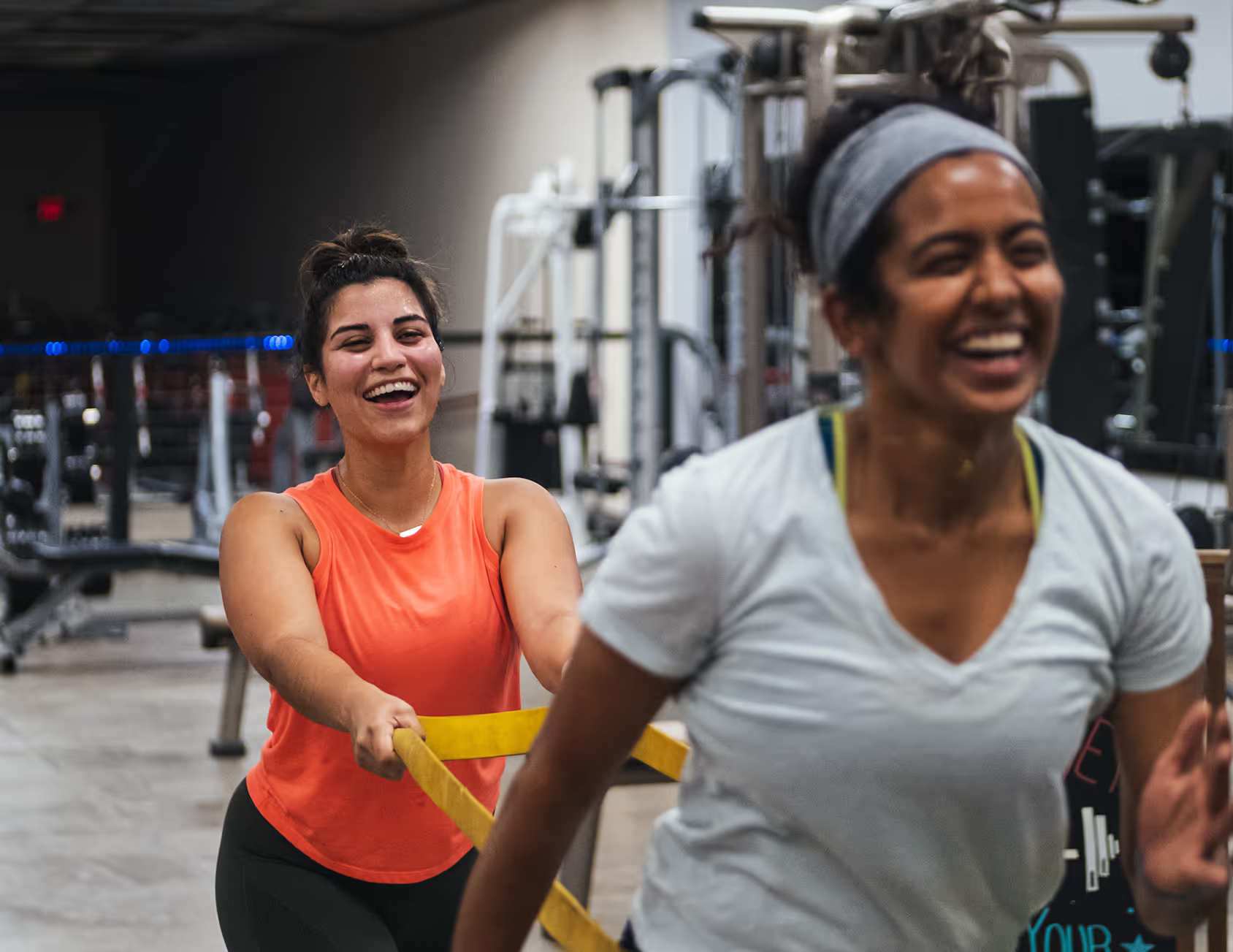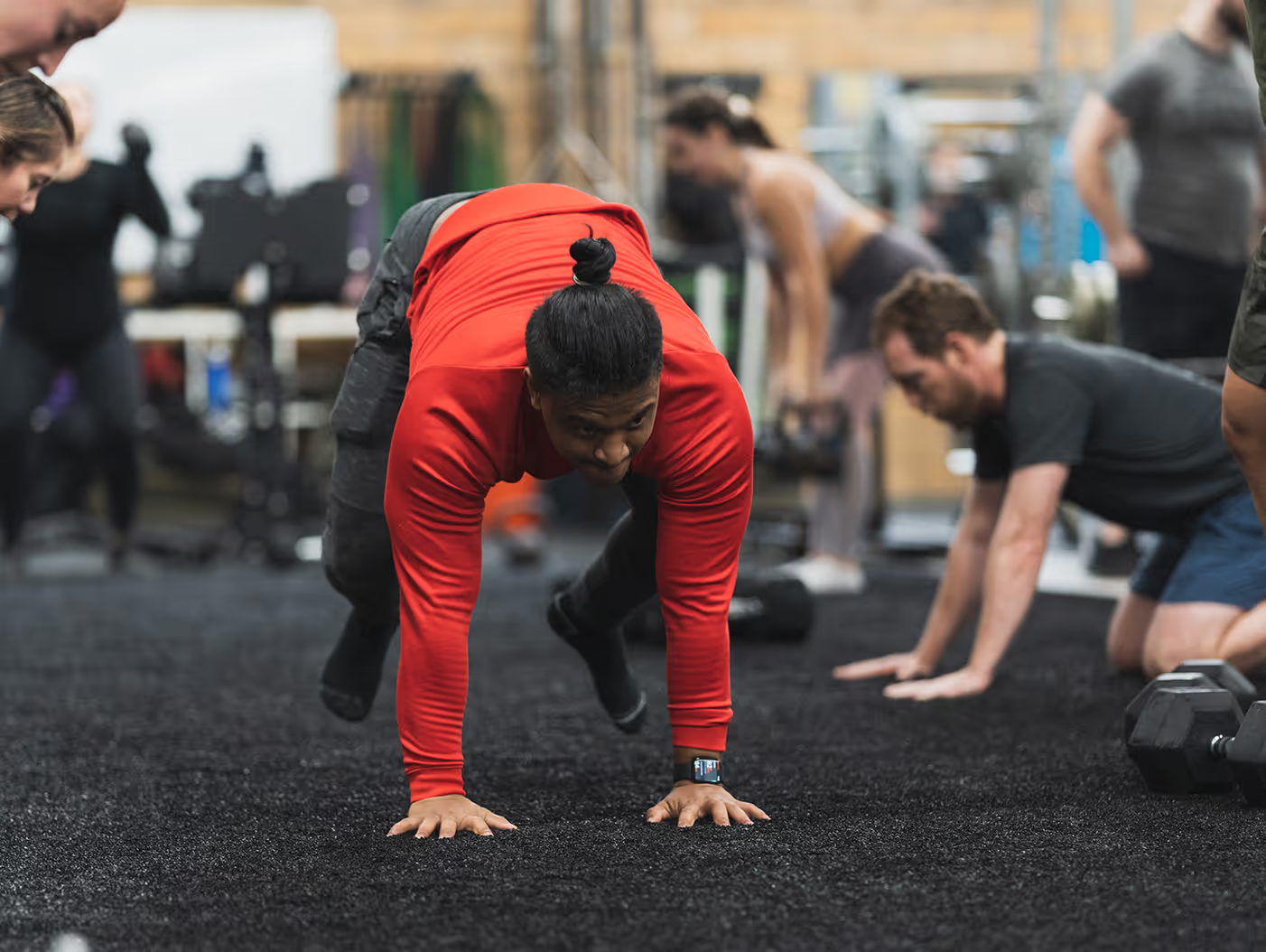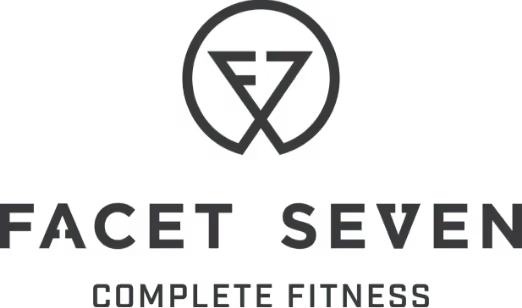Run Better by Running Less
If you feel sluggish, inflamed, numb, disconnected, who’s really in control?
THINK ABOUT IT...
You’ve been conditioned to think about your body as something mechanical, as an object to drag through the day- something to push, fix, punish or decorate…
But never as sacred…
Never as intelligent… as a vessel of Divine intention.
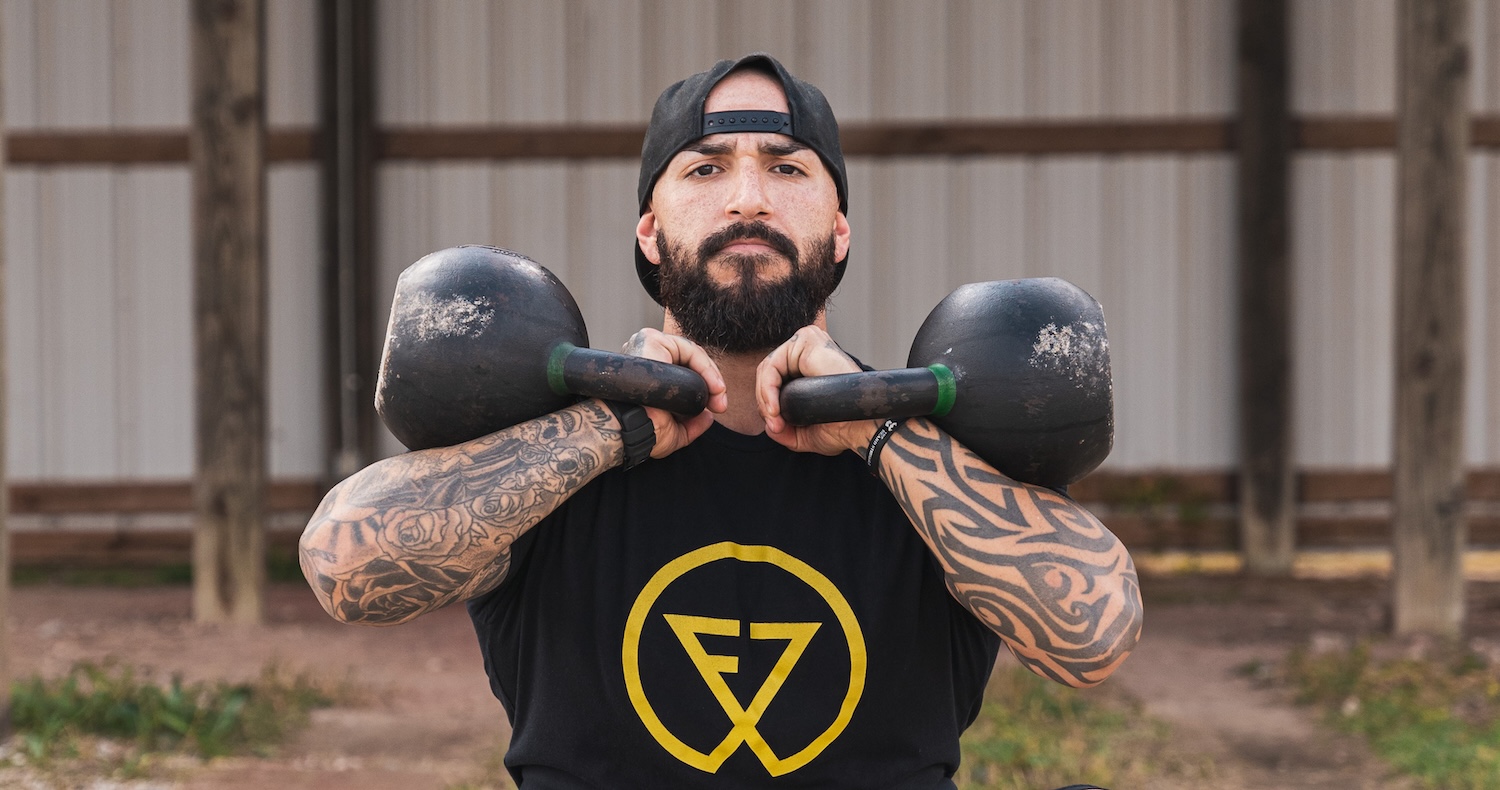
The ancients knew this. The body was never a burden, it was a temple. Not just in theory, but in function.
Every breath you take, every cell in your gut, every spark in your nervous system, it’s all part of a living code designed for perception beyond the 5 senses. But the modernism of the recent centuries is teaching you constantly to ignore it.
Start with the gut.
The gut produces more neurotransmitters than the brain, it’s your second brain, regulating your mood, your energy, and your spiritual receptivity. Yet it’s constantly under attack.
Pesticides, processed foods, antibiotics, synthetic preservatives, all designed not just to destroy gut flora, but to destroy our capacity to feel clearly. When your gut is compromised, your mind is clouded. When your digestion is inflamed your thoughts are unstable.
Those in the “remedy” business don’t want you to be sharp, focused, and intuitive… they want you bloated, distracted, emotionally volatile, and they’ve engineered the food system to be sure.
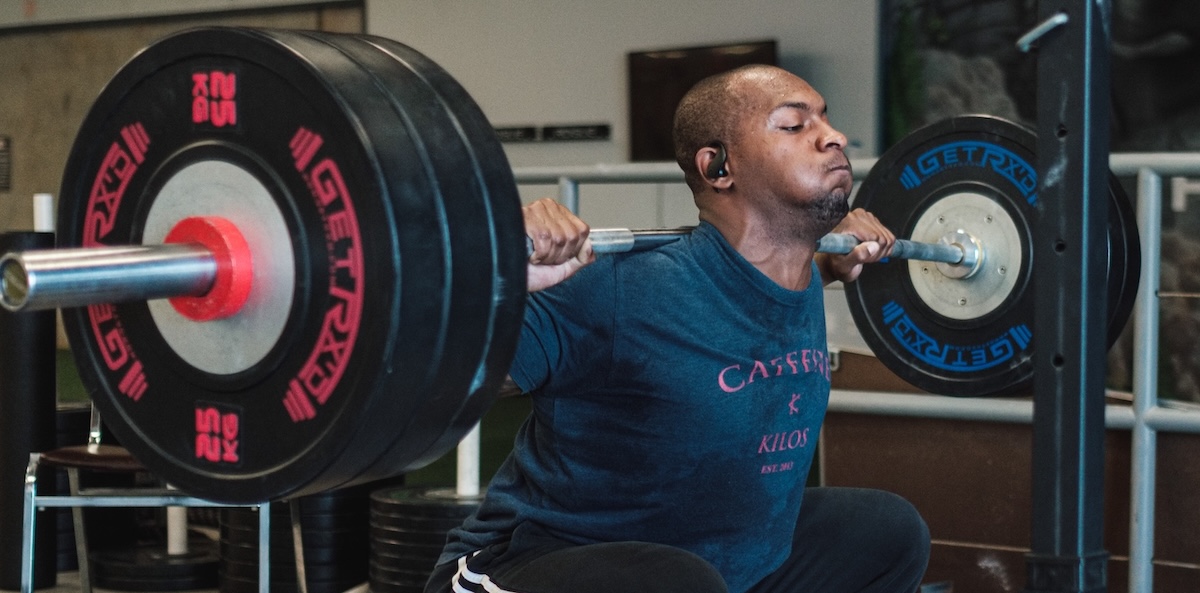
But it’s not just the food. It’s your water, your air, your light.
Tap water filled with endocrine disrupters. Air saturated with industrial toxins. Artificial light that scrambles your circadian rhythm and drains your life force. And through it all you're told this is normal, you're told to adapt. To medicate. To caffeinate. To carry on. And when your body starts breaking down they offer pills instead of root solutions.
They give you diagnosis after diagnosis but never ask the real question -
what are you feeding the instrument of your divinity?
That system doesn’t profit from your clarity…it profits from your chaos.

This is why healing your body isn’t just a wellness trend.
It’s an act of Rebellion.
It’s the foundation of awakening.
Your consciousness can’t fully rise in a body that’s drowning in inflammation, toxicity, and fatigue.
You can’t connect to the Divine when your nervous system is in survival mode. You can’t remember who you are when your cells are constantly battling the poisons of modern life.
Liberation isn’t only mental, it’s cellular. And every choice you make, every meal you eat, every breath you take is either feeding your awakening or feeding your suppression.
And here’s the real breakthrough.
Your body wants to wake up. It’s always communicating. Always recalibrating. Always moving towards healing when you give it even half a chance. And when you start treating it like the intelligent energetic vessel it is, everything shifts. Your thoughts clear, your emotions balance. Your intuition sharpens. That’s not a coincidence. That’s coherence.
That’s not a coincidence. That’s coherence.
The state where your body, mind, and spirit align into one unified field. That’s when you stop living from your head, and start living from your whole being. That’s where awareness stops being a concept, and starts becoming your baseline.
Most coaches bypass this.

They tell you to rep your problems away while still eating food that numbs your senses and scrolling until your dopamine is fried. But you can’t hack your way to awakening. You have to live it, feel it in your skin. In your gut, your breath. This is true embodiment. Not the aesthetic kind, but the kind that rewires your nervous system and clears the fog from your perception. Because the Divine doesn’t live in the sky or in scriptures. It lives in your blood, your bones, your breath. You don’t have to look outside to find it. You just have to clean the vessel it’s been trying to move through all along.
TAKE BACK CONTROL OF WHO YOU ARE.
Rebel against being blind… Rebel against the leeches of your energy.
Find who you were meant to be.
Find who you are.
We have courses designed to awaken you. Learn the basics of how your body moves.
DISCOVER HOWTake the purple pill and go down the rabbit hole with us. We are here for you, all the way.
TAKE THE LEAPMany marathon run programs have 4 to 5+ days a week of run training, with the idea that if you condition your body enough in training, it will be able to handle the demands on race day. I’d like to introduce a mantra for this blog… “Anything done too much loses value.”
Most runners I work with come to me after they’ve been living that life. Many spent months, or even years on a run program, only to end up in chronic pain with some injuries completely stopping them in their tracks.
Any runner can reduce their injuries and improve their running performance by focusing on less volume, and more on strength training and recovery. Of course, everyone is different and needs different amounts of training to reach race day strong, but you can pay attention to some key indicators during your season to make sure you’re not overdoing it.
Are you Running too much?
You may be thinking “I don’t run too much, my body needs volume,” or wondering, “how do I know if I run too much?”
The questions you should be asking yourself are:
- How do you feel when starting your run? Are you energized or sluggish?
- How do your joints and muscles feel? Do you have chronic pain?
- Are you improving, maintaining, or regressing in performance?
- Is your resting HR elevated when you wake up?
Your body tells you a lot if you listen, and if you're experiencing any of these symptoms, chances are you're running too much. Keep in mind, pain is a lagging indicator that something is wrong.
When it comes to those aches and pains, I always tell athletes that our bodies are designed to run, from the arch in our foot, to the muscles in our neck… so, we shouldn't be in pain. Running should feel natural.
Many people say that running is tough on their bodies. The problematic points revolve around the following:
Size/Weight ratio
A: I find that when people weigh too much for their frame, long runs tend to hurt. They can usually get away with short interval runs, but anything lasting a few minutes or longer causes pain. This means that you may need to consider shedding some excess weight through diet and resistance training.
B: The number one issue I find with runners is bad movement patterns. From old injuries that changed their fundamental movements to bad sleep positions that cause daily movement distortions, if the wheel wobbles enough, eventually it’ll jack up the axle.
C: Stride length and foot strike position are both dependent on your size and gait, as well as the speed or distance you plan to run.
- Sprinting or short distance runs (I qualify short distance in the eyes of a marathoner anything less than 3mi) usually allow for a more forefoot strike pattern and a stiffer foot.
- Long-distance running is less aggressive and allows for a midfoot strike pattern and a soft foot to absorb the stride.
- Email info@facetsevenfitness.com for a movement assessment and gait analysis.
Footwear
A: Many people just have the wrong shoes plain and simple.
B: High heel or Minimalist.
- Minimalist shoes became the craze as people learned the value of allowing the foot to track naturally. The idea is that with a wider toe box and minimal padding under the foot, all the muscles of the foot, ankle, and calve do what they were designed to do. Most walking or running shoes have a narrower toe box reducing the natural ‘splay’ that occurs as we load our feet during locomotion. With an elevated heel the arch becomes underutilized with the glutes getting turned off, which further destabilizes the hips. When running on natural surfaces (trails, sand, dirt, etc) having a minimal shoe that allows the architecture of the legs to work as they’re supposed to is ideal. When navigating short distances on unnatural surfaces (concrete, asphalt, etc.) a minimalist shoe can keep the legs alive and fresh. However, if you wear minimalist shoes on unnatural surfaces too long or too much, (remember the mantra: anything done too much loses value) you’ll find yourself in some serious pain.
- You may think I’m completely against heel elevated shoes, but I’m not. I say everything has its place! High heels are what I call a shoe with more than 3mm heel elevation from the toe. When running for long distances on unnatural surfaces, especially concrete and asphalt, I recommend a shoe that is designed to reduce the impact forces on the foot. A flat shoe with minimal padding forces the muscles of the legs to deal with those unnatural impact forces, causing too much breakdown. Having a shoe with proper padding under the heel and forefoot, while supporting the arch, can allow the runner to continue running on these surfaces safely. More on this topic in future blogs ;)
Then how does Running Less help?
Start with the mindset: "Strong before long, fast before far." Spend time getting stronger and faster before getting into higher mileage to reach the finish line quicker.
We all know that feeling when you take off for a run and your legs feel like springs with fresh lungs and you feel like you can keep it going all day… Only to be breathing fire at mile 4 wondering what happened. To understand this phenomenon, you need to look at metabolism. The metabolism of the human body is very complex, and consist of many pathways, but for the simplicity of this conversation we’ll focus on 3 Systems:
Three Metabolic Systems:
A: Phosphagen System – This is a form of anaerobic metabolism and uses creatine phosphate to generate ATP for the first few seconds you have of Incredible Hulk strength and speed. Activities that use this system are explosive, require maximal effort, and are short in duration.
B: Glycolytic System – The process of glycolysis, which is the breakdown of glycose, to make ATP.
C: Fat Oxidation – This is the breakdown of fat for fuel.
For more information on this, please read the following:
If you were to correlate this to typical training Zones:
A: Phosphagen System = Zone 5 (Running from a Bear)
B: Glycolytic System = Zone 3-4 (Running for a Jog with Friends)
C: Fat Oxidation = Zone 1-2 (Walking)
One thing to note, we’re always dancing between all three systems, but dominant in one depending on our activity. It’s a continuum that is dialed in according to your exertion and understanding this can make or break your race.
The best way to understand all of this is to look at it this way:
System C is always being used. When you’re just sitting watching TV and breathing, to when you walk to the car to go to work. System C is our primary fuel source when our effort is low. The less intense the exertion, the more System C is in play. When we start to increase our effort, maybe traffic was rough making you late for work and you jog from the parking lot into the office, System B will start to kick in. It’s not until you’re running at your max effort that you start to tap into System A.
We mention this so that you understand that it’s important to train all three systems, and many run programs keep us in Systems B & C. The reason we see benefit in training System A is what it does to our body on a neural and muscular level. Simply stated,
- If you don’t run fast in training, you won’t be fast on race day.
- Your body won’t know how fast it is until you ask it to show you.
- Spending time above your comfort zone increases the threshold level of your comfort zone.

Understand strength and endurance, and how strength can breed endurance
There are many benefits to strength training for running which we’ll discuss shortly, but let’s spend a minute evaluating contact time in reference to the amount of time your foot is on the ground during locomotion. Notice as you walk slowly you spend quite a bit longer on the supporting leg than if you walk briskly. As you speed up your walk, to a jog, to a run, you’ll note that the amount of time your supporting leg is on the ground reduces concurrently to your speed increase.
Research shows that by increasing power in the legs of marathon runners, that contact time per stride went down. Less time on the ground means faster running…
The caveat is, it takes more power to get you off the ground quickly. This is where strength training comes in (details below). By increasing the strength of your legs, your power output increases, which translates into less time on the ground.
Training like this taxes the body, which leads to our next point. If you put in the hard work, you’ll need hard recovery. To run with long-term sustainability in mind means taking the time to strengthen your body, instill proper form, and focus on recovering completely after these intense bouts.
More time for recovery
Life’s impact on your body is just a balance of stress and breakdown, with rest and recovery. The body is always trying to heal from the chaos we put it through, and it’s damn good at it when we give it time to work its magic. The real concern is, if we don’t give ourselves adequate recovery from the stress we put ourselves through, it’s not always apparent (reference death by a thousand cuts on injury blog).
Our bodies adapt to the regular stress we put ourselves through. Although anytime we lift weights or run faster/farther than we previously have adapted to, the additional stress causes slight damage to our muscles called microtrauma. This sounds a little worse than it is, but essentially, we’re creating slight tears in our muscle fibers. This can cause inflammation and soreness. Ever go into the gym feeling like a boss, knock out a bunch of sets, only to barely be able to walk the next day? This is DOMS, or Delayed Onset Muscle Soreness. Research shows that the recovery window from DOMS can last from 24-96 hours. This means if you’re running 5 days a week, the chances that you’re fully recovered and performing at your best is slim. This means you should turn your focus on the things you can do to help your body recover quicker and adapt to the new demands.
Recovery shows up in three places:
- The time and type of rest we craft for ourselves
- The quality of sleep we craft for ourselves
- The fuel we craft for ourselves
In this blog, we’ll spend time on recovery points 1 and 2. Point 3 we will address on a later blog.

1. Recovery Training: What and How
The Time and Type of rest we craft for ourselves is directly tied to the quality of performance. Less time pounding pavement means more time reaping the benefits of recovery training. Recovery training means we implement practices and activities that help our body flush toxins out of our tissues and nutrients back in. We use the term ‘craft’ as it takes time and planning to get this right. There are many ways to do this, but we’ll focus on three that we highly recommend.
- Yoga – Active and controlled movements, usually performed slowly or held in static positions, that actively lengthen the muscular system under a load of body weight.
- The Ready State – A system designed by Dr. Kelly Starrett using balls, rollers, bands, and joint positions to break apart adhered tissues and re-establish proper movement capacity.
- Pandiculation – This is the body’s natural reset switch. When you see a dog wake up and extend their limbs and spread their paws and stretch, that is Pandiculation. We do the same thing sometimes waking up in bed, this is termed Pandiculation. Clinical Somatics with Sarrah Warren is a great course you can take to learn more about this natural mechanism to reset your muscles.
All of these will help you to recover between sessions. Meaning you can approach your next workout fresh and recovered and perform better during your workouts.
2. Sleep: Before, During, & After
At best we spend 25-30% of our lives sleeping. There are many natural phenomena that occur during sleep, but most importantly the recovery cycles the body goes through are imperative for quality performance. Once again, we use the term ‘craft’ as there are many things we can do to improve our quality of sleep, other than just going to sleep. Some things you can do to improve those z’s.
- Create a bedtime routine – Our bodies thrive on routine. Creating something as simple as a 5-minute bedtime process will help the body know it’s time to wind down.
- Look for those little lights – Light has a huge impact on our ability to sleep, and the color of light even more so. Warm colors like orange and red can help tell our minds that the sun has set and it’s time to rest. Blue on the other hand tells our body that it’s daytime and we’ve got work to do! Make sure you don’t have the wrong color night lights and consider adding some of the right ones to set the mood. o Research shows that using a preferred color (one that you like) can increase melatonin production reducing the time it takes to go to sleep by up to 30%.
- https://www.healthline.com/health/best-color-light-for-sleep
- Learn Your Circadian Rhythm – Everyone is different when it comes to the optimal sleep windows (times you’re able to spend on sleep), although we’re all the same when it comes to sleep cycles (the types of sleep our body goes through during the sleep window). There are four stages of sleep cycles, and it’s important that you pay attention to see how you feel when trying different sleep windows. Each stage has its place, and if you’re missing your ideal sleep window you could be negatively impacting your daily performance.
- In normal adults, REM sleep increases as the night progresses and is longest in the last one-third of the sleep episode.
- https://www.ncbi.nlm.nih.gov/books/NBK19956/
- Stages of Sleep
- NRem Sleep N1 & N2 – Non REM sleep falls into 3 categories with N1 and N2 occurring as we fall asleep and lasting up to 70-100 minutes.
- NRem Sleep N3 – This is our slow wave “deep sleep” and lasts 20-40 minutes.
- Rem Sleep – Also known as deep sleep, lasts only a few minutes but progresses in length as the night does.

Extra Time = Strength Training
How strength training benefits runners
There are many benefits of strength training. First, if you don’t load your bones, they get soft. Holding and lifting heavy things, your bones will stay strong. (More on this in a later blog). A second advantage is that you reduce the risk of injury having stronger tissues and ligaments. But we know that’s not why you’re reading all of this.
How does strength training make you a faster long-distance runner?
Stated simply:
The stronger your body is, the more stable and 'in line' your body will be, which translates to more power that you can create. As we discussed above, increased power leads to increased running efficiency. Putting more power into your strides means less contact time on the ground, making you faster!
Stronger Muscles = More Power = Faster Running What workouts should runners do?
If you’d like some exercises to try, I’ve highlighted the Three Best Kettlebell Exercises for Runners here. Although, if you’re looking for how to program a week, a month, or even a whole season, I’ve laid out a simple-to-follow model so that you can structure your week.

You’ll see a big difference in our Facet Seven Strength for Running programs versus other strength or endurance programs.
Some differences with our programs include:
- Ancillary work to target those muscles that help with joint mechanics and stability.
- Compound movements, ones where both limbs work together like a Barbell Squat, are great for developing strength, although we add a lot of unilateral movements (ones that the limbs work separately, like a Step Up on a box where the front leg does the work solo) as well. The logic here is that we want to train the core with asymmetrical loading patterns to simulate all parts of locomotion. You’ll notice a blend between compound movements and unilateral movements in each workout.
- A volume structure that supports continued running progressions.
- A bridge between strength and endurance training volume so that no overtraining occurs.
- Includes 3-days of resistance training to blend with your run program.
- Access to our Class Library with Yoga.
I know I’ve thrown a lot at you, but not to worry. I’ve created a simple-to-follow sample program pdf for you to get an idea of how to structure all of this.
Conclusion
If your program is on point, you should see some form of improvement. Whether it be a reduced HR while holding (or increasing) your speed, getting comfortable in a lower gear, or hitting a new PR, use our programs for best results!

